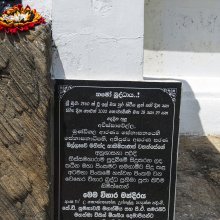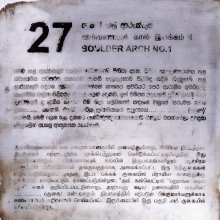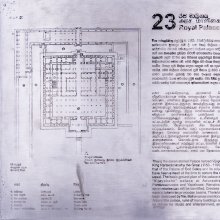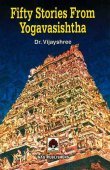Anka, Aṃka, Aṅka, Amka, Amka, Aṅkā, Āṇka, Āṃka: 28 definitions
Introduction:
Anka means something in Hinduism, Sanskrit, Jainism, Prakrit, Buddhism, Pali, the history of ancient India, Marathi, Hindi, Tamil. If you want to know the exact meaning, history, etymology or English translation of this term then check out the descriptions on this page. Add your comment or reference to a book if you want to contribute to this summary article.
Images (photo gallery)
In Hinduism
Natyashastra (theatrics and dramaturgy)
Source: Wisdom Library: Nāṭya-śāstraAṅka (अङ्क) refers to one of the “ten kinds of dramatic plays” (daśarūpa), according to the Nāṭyaśāstra chapter 20. It is also known by the name Utsṛṣṭikāṅka. These different types of dramas are considered to have originated from the various styles (vṛtti), which is discussed in chapter 22 of the same work. The Aṅka type of drama includes the following styles: Verbal (bhāratī), Grand (sāttvatī) and Energetic (ārabhaṭī).

Natyashastra (नाट्यशास्त्र, nāṭyaśāstra) refers to both the ancient Indian tradition (shastra) of performing arts, (natya—theatrics, drama, dance, music), as well as the name of a Sanskrit work dealing with these subjects. It also teaches the rules for composing Dramatic plays (nataka), construction and performance of Theater, and Poetic works (kavya).
Dhanurveda (science of warfare)
Source: Knowledge Traditions & Practices of India: Martial Arts Traditions: A SurveyAṅka (अङ्क) according to ancient Indian martial arts (dhanurveda).—A person fighting another who carried the same weapon was known as aṅka. Aṅkavinoda, duel or combats, were also popular martial sports in India. The fights in this category were at times fierce, leading to bloodshed.
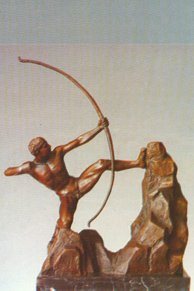
Dhanurveda (धनुर्वेद) refers to the “knowledge of warfare” and, as an upaveda, is associated with the Ṛgveda. It contains instructions on warfare, archery and ancient Indian martial arts, dating back to the 2nd-3rd millennium BCE.
Kavya (poetry)
Source: archive.org: Naisadhacarita of SriharsaAṅka (अङ्क) refers to “pictorial designs” (e.g., on a sword) and is mentioned in the Naiṣadha-carita 16.20. [In connection with the word aṅkakāra, Viśvaprakāśa says that aṅka means citrayuddha].

Kavya (काव्य, kavya) refers to Sanskrit poetry, a popular ancient Indian tradition of literature. There have been many Sanskrit poets over the ages, hailing from ancient India and beyond. This topic includes mahakavya, or ‘epic poetry’ and natya, or ‘dramatic poetry’.
Ganitashastra (Mathematics and Algebra)
Source: archive.org: Hindu Mathematics1) Aṅka (अङ्क) refers to the “number” (which is the coefficient of the square of the unknown), according to the principles of Bījagaṇita (“algebra” or ‘science of calculation’), according to Gaṇita-śāstra, ancient Indian mathematics and astronomy.—According to Pṛthūdakasvāmī’s commentary on Brahmagupta’s Brāhmasphuṭasiddhānta: “The number (aṅka) which is the coefficient of the square of the unknown is called the ‘square’ and the number which forms the coefficient of the (simple) unknown is called ‘the unknown quantity’”.
2) Aṅka (अङ्क) represents the number 9 (nine) in the “word-numeral system” (bhūtasaṃkhyā).

Ganitashastra (शिल्पशास्त्र, gaṇitaśāstra) refers to the ancient Indian science of mathematics, algebra, number theory, arithmetic, etc. Closely allied with astronomy, both were commonly taught and studied in universities, even since the 1st millennium BCE. Ganita-shastra also includes ritualistic math-books such as the Shulba-sutras.
Shaktism (Shakta philosophy)
Source: Google Books: ManthanabhairavatantramAṅka (अङ्क) refers to the “mark” (of the venerable Mīna), according to verse 10.152-155 of the Kularatnoddyota, one of the earliest Kubjikā Tantras.—Accordingly, “O mistress of Kula, this is by its very nature the last Kula tradition. [...] The previous tradition will possess the mark (aṅkasaṃyukta) of the venerable Mīna (Mīnanātha) and the transmission of the sacred seats and that lineage. It will possess the names of the Yoginīs and Siddhas and, along with the trees and creepers, O mother of Kula, there will also be an independent lineage (pṛthaksantāna-bheda)”.

Shakta (शाक्त, śākta) or Shaktism (śāktism) represents a tradition of Hinduism where the Goddess (Devi) is revered and worshipped. Shakta literature includes a range of scriptures, including various Agamas and Tantras, although its roots may be traced back to the Vedas.
Purana and Itihasa (epic history)
Source: archive.org: Shiva Purana - English TranslationAṅka (अङ्क) refers to the “lap” , according to the Śivapurāṇa 2.4.5 (“Kārttikeya is crowned”).—Accordingly, after the Kṛttikās spoke to Kārttikeya: “[...] The Nīrājana rite was performed by the delighted gods in the company of their wives. The sages adored Kumāra with the Vedic chants, the musicians by singing songs, and others by playing upon musical instruments. Placing Kumāra shining with brilliant lustre on his lap (aṅka) [svamaṃkamāropya] Pārvatī shone with glory as the greatest among women who carried sons. [...]”.

The Purana (पुराण, purāṇas) refers to Sanskrit literature preserving ancient India’s vast cultural history, including historical legends, religious ceremonies, various arts and sciences. The eighteen mahapuranas total over 400,000 shlokas (metrical couplets) and date to at least several centuries BCE.
In Jainism
General definition (in Jainism)
Source: Wisdom Library: JainismAṅka (अङ्क) refers to a species of Anudiśa gods, according to Jain cosmological texts in the Digambara tradition where the Anudiśa heaven is one of the five heavens of the upper world (ūrdhvaloka).
Source: archive.org: TrisastisalakapurusacaritraAṅka (अङ्क) refers to a kind of white jewel, according to chapter 1.6 [ādīśvara-caritra] of Hemacandra’s 11th century Triṣaṣṭiśalākāpuruṣacaritra: an ancient Sanskrit epic poem narrating the history and legends of sixty-three illustrious persons in Jainism.—(cf. Uttarādhyayana 36.76)
Accordingly, “[...] In the broad central part of the great caitya Siṃhaniṣadyā was a large jeweled platform. [...] On the dais were shining jeweled statues of the twenty-four Arhats, beginning with Ṛṣabha Svāmin. The images, having the respective figures, size, and color, were like the Masters in person engaged in śaileṣīdhyāna. Sixteen of these were golden, two were lapis lazuli, two of crystal, two of cat’s eye, and two of ruby. The nails of all of these Arhat-statues were of aṅka with insets of lohitākṣa. [...] The statues shone, made of various jewels as described”.
Source: Encyclopedia of Jainism: Tattvartha Sutra 4: The celestial beings (deva)Aṅka (अङ्क) or Aṃka is one of the nine anudiśas: a subclasses of kalpātītas (born beyond heaven), itself a division of empyrean celestial beings (vaimānika) according to the 2nd-century Tattvārthasūtra 4.19. The living beings residing in the vimānas are called the empyrean gods (vaimānika) and represents one of the four classes of Devas.
The nava-anudiśas (e.g., Aṅka) are called so because they have nine heavenly abodes one in each of the eight directions. Which thought-colourations are there in Graivaiyaka, Anudiśa and Anuttara gods? They have pure white thought-colouration.

Jainism is an Indian religion of Dharma whose doctrine revolves around harmlessness (ahimsa) towards every living being. The two major branches (Digambara and Svetambara) of Jainism stimulate self-control (or, shramana, ‘self-reliance’) and spiritual development through a path of peace for the soul to progess to the ultimate goal.
India history and geography
Source: Cologne Digital Sanskrit Dictionaries: Indian Epigraphical GlossaryAṅka.—(IA 19), a name, appelation or biruda. (IE 7-1-12; CII 4), ‘nine’. Cf. aṅke, aṅkena, aṅkataḥ (IA 15), ‘in figures’. Cf. aṅka, abbreviation of Telugu-Kannaḍa aṅkakāṟa; same as Sanskrit gaṇḍa (Ep. Ind., Vol. XXXIV, p. 270), ‘a hero, champion or warrior’. See aṅkakāra. Note: aṅka is defined in the “Indian epigraphical glossary” as it can be found on ancient inscriptions commonly written in Sanskrit, Prakrit or Dravidian languages.
Source: Project Gutenberg: The Hindu-Arabic NumeralsAṅka (अङ्क) refers to the “nine ciphers” while Aṅkapalli refers to the “decimal-place system of writing numbers”.—When the aṅkapalli was perfected, the tenth symbol was called the śūnyabindu, generally shortened to śūnya (the void). Brockhaus has well said that if there was any invention for which the Hindus, by all their philosophy and religion, were well fitted, it was the invention of a symbol for zero. This making of nothingness the crux of a tremendous achievement was a step in complete harmony with the genius of the Hindu.—(Cf. “Zur Geschichte des indischen Ziffernsystems”, Zeitschrift für die Kunde des Morgenlandes, Vol. IV, 1842, pp. 74-83.)

The history of India traces the identification of countries, villages, towns and other regions of India, as well as mythology, zoology, royal dynasties, rulers, tribes, local festivities and traditions and regional languages. Ancient India enjoyed religious freedom and encourages the path of Dharma, a concept common to Buddhism, Hinduism, and Jainism.
Languages of India and abroad
Pali-English dictionary
Source: BuddhaSasana: Concise Pali-English Dictionaryaṅka : (m.) 1. the lap; 2. a mark; sign; 3. a numerical figure.
Source: Sutta: The Pali Text Society's Pali-English Dictionary1) Aṅka, 2 (Vedic aṅka hook, bent etc., anc, cp. aṅkura & aṅkusa. Gr. a)gkw/n elbow, a)/gkura = anchor; Lat. uncus nail; Ohg. angul = E. angle) (a.) a hook J.V, 322 = VI, 218 (v. l. BB aṅga). — (b.) the lap (i. e. the bent position) or the hollow above the hips where infants are carried by Hindoo mothers or nurses (aṅkena vahati) Vin.II, 114; D.II, 19 (aṅke pariharati to hold on one’s lap or carry on one’s hips), 20 (nisīdāpeti seat on one’s lap); M.II, 97 (aṅkena vahitvā); Th.1, 299; J.I, 262 (aṅke nisinna); II, 127, 236; VI, 513; DhA.I, 170 (aṅkena vahitvā) PvA.17 (nisīdāpeti). (Page 6)
2) Aṅka, 1 = aṅga, sign, mark, brand Miln.79; °karana branding J.IV, 366, 375. See also aṅketi. (Page 6)

Pali is the language of the Tipiṭaka, which is the sacred canon of Theravāda Buddhism and contains much of the Buddha’s speech. Closeley related to Sanskrit, both languages are used interchangeably between religions.
Marathi-English dictionary
Source: DDSA: The Molesworth Marathi and English Dictionaryaṅka (अंक).—m (S) A number, figure, cypher, an arithmetical sign. 2 A mark or sign gen. 3 S An act of a play. 4 The thigh: also the haunch. (Ital. anca.) 5 (Commonly āṅkha q. v.) A temple of the head.
--- OR ---
āṅka (आंक).—m (aṅka S) A figure or number; an arithmetical sign.
Source: DDSA: The Aryabhusan school dictionary, Marathi-Englishaṅka (अंक).—m A figure; a mark. The thigh. An act of a play.
--- OR ---
āṅka (आंक).—m A figure or number.
Marathi is an Indo-European language having over 70 million native speakers people in (predominantly) Maharashtra India. Marathi, like many other Indo-Aryan languages, evolved from early forms of Prakrit, which itself is a subset of Sanskrit, one of the most ancient languages of the world.
Sanskrit dictionary
Source: DDSA: The practical Sanskrit-English dictionaryAṅka (अङ्क).—1 A. (aṅkate) To move in a curve. -1 U. (aṅkayati-te aṅkayitum)
1) To mark, stamp; हेमपादाङ्कितायां पीठिकायम् (hemapādāṅkitāyāṃ pīṭhikāyam) K. 192; स्वनामधेयाङ्कित (svanāmadheyāṅkita) Ś.4. stamped with his name; नयनोद- बिन्दुभिः अङ्कितं स्तनांशुकम् (nayanoda- bindubhiḥ aṅkitaṃ stanāṃśukam) V.4.7. so भुजे शचीपत्रविशेषकाङ्किते (bhuje śacīpatraviśeṣakāṅkite) R.3.55.6.
2) To enumerate, count.
3) To brand, stain, stigmatize; तत्को नाम गुणो भवेत्सुगुणिनां यो दुर्जनैर्नाङ्कितः (tatko nāma guṇo bhavetsuguṇināṃ yo durjanairnāṅkitaḥ) Bhartṛhari 2.54 branded, censured, condemned; वस्त्रेण वेष्टयित्वा °तं शिरः (vastreṇa veṣṭayitvā °taṃ śiraḥ) Kathāsaritsāgara 13.152 branded head.
4) To walk, stalk, go.
--- OR ---
Aṅka (अङ्क).—[aṅk kartari karaṇe vā ac]
1) The lap (n. also); अङ्काद्ययावङ्कमुदीरिताशीः (aṅkādyayāvaṅkamudīritāśīḥ) Kumārasambhava 7.5. passed from lap to lap.
2) A mark, sign; अलक्तकाङ्कां पदवीं ततान (alaktakāṅkāṃ padavīṃ tatāna) R.7.7; पदङ्क्तिरलक्ताङ्का (padaṅktiralaktāṅkā) Rām.; रतिवलयपदाङ्के कण्ठे (rativalayapadāṅke kaṇṭhe) Kumārasambhava 2.64. marked with the signs or traces &c.: मद्गोत्राङ्कं गेयम् (madgotrāṅkaṃ geyam) Meghadūta 86, a stain, spot, stigma, brand; इन्दोः किरणेष्विवाङ्कः (indoḥ kiraṇeṣvivāṅkaḥ) Kumārasambhava 1.3; कट्यां कृताङ्को निर्वास्यः (kaṭyāṃ kṛtāṅko nirvāsyaḥ) Manusmṛti 8.281.
3) A numerical figure; a number; the number 9.
4) A side flank; proximity, reach (connected with 1 above); समुत्सुकेवाङ्कमुपैति सिद्धिः (samutsukevāṅkamupaiti siddhiḥ) Kirātārjunīya 3. 4; प्रेम्णोपकण्ठं मुहुरङ्कभाजो रत्नावलीरम्बुधिराबबन्ध (premṇopakaṇṭhaṃ muhuraṅkabhājo ratnāvalīrambudhirābabandha) Śiśupālavadha 3.36; सिंहो जम्बुकमङ्कमागतमपि त्यक्त्वा निहन्ति द्विपम् (siṃho jambukamaṅkamāgatamapi tyaktvā nihanti dvipam) Bhartṛhari 2.3; Ki. 17.64, See°आगत (āgata) below.
5) An act of a drama, for its nature &c., See S. D.278.
6) A hook or curved instrument.
7) A species of dramatic composition, one of the ten varieties of रूपक (rūpaka), See S. D.519.
8) An ornament (bhūṣā).
9) A sham fight, military show (citrayuddha).
1) A coefficient.
11) A place; नानाङ्क- चिह्नैर्नवहेमभाण्डैः (nānāṅka- cihnairnavahemabhāṇḍaiḥ) (turaṅgaiḥ) Bu.ch.2.4.
12) A sin, misdeed.
13) A line, curved line; a curve or bend generally, the bend in the arm.
14) The body.
15) A mountain. अङ्कः स्थानान्तिकक्रोडभूषणोत्संगलक्ष्मसु । मन्तो नाटकविच्छेदे चित्रयुद्धे च रूपके (aṅkaḥ sthānāntikakroḍabhūṣaṇotsaṃgalakṣmasu | manto nāṭakavicchede citrayuddhe ca rūpake) || Nm. [cf. L. uncus; Gr. ogkos]
Derivable forms: aṅkaḥ (अङ्कः).
Source: Cologne Digital Sanskrit Dictionaries: Shabda-Sagara Sanskrit-English DictionaryAṅka (अङ्क).—n. (ṅkaṃ) 1. A mark or spot. 2. The flank or part above the hips. 3. A species of dramatic entertainment. 4. The act of a play, &c. 5. Fault, offence. 6. A line, a stroke. 7. Mimic war or conflict. 8. ornament, decoration. 9. Place, abode. 10. Proximity, proximate. 11. A chapter or section. 12. The body. 13. A cypher, an arithmetical sign. E. añca to go, and the Unadi affix ka; or aṅka to stain or spot, ac aff.
Source: Cologne Digital Sanskrit Dictionaries: Benfey Sanskrit-English DictionaryAṅka (अङ्क).—i. e. añc + a, m. 1. A hook. 2. A mark. 3. A cipher. 4. An act in a drama. 5. The flank. 6. The lap. 7. The arm, [Vikramorvaśī, (ed. Bollensen.)] [distich] 147. 8. Proximity, [Bhartṛhari, (ed. Bohlen.)] 2, 23.
Source: Cologne Digital Sanskrit Dictionaries: Cappeller Sanskrit-English DictionaryAṅka (अङ्क).—[masculine] hook (poss. aṅkin), bend, flank, [especially] of the body, groin, lap, side, proximity; mark, sign; act of a play.
Source: Cologne Digital Sanskrit Dictionaries: Monier-Williams Sanskrit-English Dictionary1) Aṅka (अङ्क):—[from aṅk] m. a hook, [Ṛg-veda i, 162, 13, etc.]
2) [v.s. ...] part of a chariot (used in the dual), [Taittirīya-saṃhitā; Taittirīya-brāhmaṇa]
3) [v.s. ...] a curve
4) [v.s. ...] the curve in the human, especially the female, figure above the hip (where infants sitting astride are carried by mothers, hence often = ‘breast’ or ‘lap’)
5) [v.s. ...] the side or flank
6) [v.s. ...] the body
7) [v.s. ...] proximity, place
8) [v.s. ...] the bend in the arm
9) [v.s. ...] any hook or crooked instrument
10) [v.s. ...] a curved line
11) [v.s. ...] a numerical figure, cipher, a figure or mark branded on an animal, etc.
12) [v.s. ...] any mark, line, stroke, ornament, stigma
13) [v.s. ...] a number
14) [v.s. ...] the numbers one and nine
15) [v.s. ...] a co-efficient
16) [v.s. ...] an act of a drama
17) [v.s. ...] a drama
18) [v.s. ...] a military show or sham-fight
19) [v.s. ...] a misdeed, a sin, [cf. Lexicographers, esp. such as amarasiṃha, halāyudha, hemacandra, etc.]
20) [v.s. ...] a kind of regnal year (used in Orissa and usually spoken of as Onko year
21) [v.s. ...] the peculiarity of it is that in counting the years of the reign of a king certain numbers are omitted, thus, [according to] to one system, the numbers ending with 6 or 0, excepting 10, are dropped, so that the sequence of the years would be-1, 2, 3, 4, 5, 7, 8, 9, 10, 11, 12, 13, 14, 15, 17, 18, 19, 21 etc.)
22) [v.s. ...] aṅka cf. [Greek] ἀγκάς, ἀγκάλη, , ὄγκος, and [Latin] uncus.
Source: Cologne Digital Sanskrit Dictionaries: Goldstücker Sanskrit-English DictionaryAṅka (अङ्क):—m.
(-ṅkaḥ) I.
1) Winding tortuously.
2) The flank or part above the hips where women place young children in carrying them.
3) The body.
4) Proximity.
5) Place, ground.
6) A hooked instrument. E. añc, kṛt or uṇ. aff. ac. See aṅkas. Ii.
1) A mark or spot.
2) (In arithmetic.) A cypher, an arithmetical sign, a number or coefficient.
3) (Used sometimes to denote) the numeral 9.
4) A line, a stroke.
5) Fault, offence.
6) Ornament, decoration.
7) The act of a play.
8) A species of dramatic entertainment.
9) Mimic war or conflict. E. añc, kṛt or uṇ. aff. ac or aṅk, kṛt aff. ac.
Source: Cologne Digital Sanskrit Dictionaries: Yates Sanskrit-English Dictionary1) Aṅka (अङ्क):—(ka t) aṅkayati 10. a. To mark, to number or count.
2) (ṅkaḥ) 1. m. A mark; body; cypher.
Source: DDSA: Paia-sadda-mahannavo; a comprehensive Prakrit Hindi dictionary (S)Aṅka (अङ्क) in the Sanskrit language is related to the Prakrit word: Aṃka.
[Sanskrit to German]
Sanskrit, also spelled संस्कृतम् (saṃskṛtam), is an ancient language of India commonly seen as the grandmother of the Indo-European language family (even English!). Closely allied with Prakrit and Pali, Sanskrit is more exhaustive in both grammar and terms and has the most extensive collection of literature in the world, greatly surpassing its sister-languages Greek and Latin.
Hindi dictionary
Source: DDSA: A practical Hindi-English dictionary1) Aṃka (अंक) [Also spelled ank]:—(nm) a number, numeral, figure, digit; marks; a mark; an act (of a drama or play); lap, embrace; ~[ka] an accountant; a marker; ~[gaṇita] (the science of) Arithmetic; —[bharanā], —[lagānā] to embrace.
2) Aṃka (अंक) [Also spelled ank]:—[na] (nm) stamping; plotting; marking; ~[nīya] worth being marked/stamped.
...
Prakrit-English dictionary
Source: DDSA: Paia-sadda-mahannavo; a comprehensive Prakrit Hindi dictionary1) Aṃka (अंक) in the Prakrit language is related to the Sanskrit word: Aṅka.
2) Aṃka (अंक) also relates to the Sanskrit word: Aṅka.
3) Aṃka (अंक) also relates to the Sanskrit word: Aṅka.
Prakrit is an ancient language closely associated with both Pali and Sanskrit. Jain literature is often composed in this language or sub-dialects, such as the Agamas and their commentaries which are written in Ardhamagadhi and Maharashtri Prakrit. The earliest extant texts can be dated to as early as the 4th century BCE although core portions might be older.
Kannada-English dictionary
Source: Alar: Kannada-English corpusAṃka (ಅಂಕ):—
1) [noun] a rod of metal or wood bent sharply backward at one end, to catch or hold an object; a hook.
2) [noun] an instrument or a weapon having a hook-end.
3) [noun] the state of being bent or crooked; a bend; crookedness.
4) [noun] a support for a horse-rider’s foot; stirrup.
5) [noun] a device consisting of a bar turning about a fixed point, the fulcrum, using power or force applied at a second point to lift or sustain a weight at a third point; a lever.
6) [noun] the fold of the body of a person sitting; the lap.
7) [noun] the side of an animal (from the ribs to the thigh) or of anything; flank.
8) [noun] the whole physical frame of a person or an animal; the body.
9) [noun] a long mark having no breadth or thickness, connecting to different points on the same plane; a line.
10) [noun] a charecter representing, in writing, a number; a figure.
11) [noun] a visual indication; a mark; a sign, symbol or token.
12) [noun] a mark or a spot made by the drop of wet matter; hence, (fig.) a mark of infamy; stigma; a stain.
13) [noun] that by which a person or thing is called or known; a name.
14) [noun] an appellation attached to one’s name as a mark of distinction; a title.
15) [noun] widespread high estimation; renown; fame.
16) [noun] a distinctive section of a play; an act.
17) [noun] one of the ten varieties of dramatic composition.
18) [noun] a physical combat between two opposing persons or armies; a wrestling or battle.
19) [noun] a professional wrestler.
20) [noun] a contention, in rivalry or to excel another; a competition; vying.
21) [noun] the number nine, and the figure representing the number nine.
22) [noun] a certain portion, either marked or not, on a surface or within an enclosed building etc.
23) [noun] the god of the firmament and of rain; Indra.
24) [noun] the inner portion of anything or inner space.
25) [noun] that which has comparatively been longer in existence; that which belongs to older times.
26) [noun] uprightness in ethical and social behaviour; rectitude; righteousness.
27) [noun] the sense that a word is meant to carry; meaning.
28) [noun] a limited extent in one, two or three dimensions; space.
29) [noun] a violent mental struggle; the state of grievous distress; agony; anguish.
30) [noun] that which is variegated with different colours and designs (usu. dif. from its natural state).
31) [noun] the state of being variegated; variegation.
32) [noun] the narrowest beam of light; a ray.
33) [noun] an act of enhancing the beauty or of adding colour or ornament for a better appearance; decoration.
34) [noun] an ornament used to add grace or beauty.
35) [noun] the chiming sound of bells or produced by beating small drums.
36) [noun] a point awarded for merit; a mark.
37) [noun] a religious offence or irregularity; sin.
38) [noun] an act that is wrong from the point of view of ethics, social customs or law; a crime; an offence.
39) [noun] a mountain.
40) [noun] the state and fact of being; existence.
41) [noun] brightness, as in reflected light or luster emanated from within;42) [noun] ಕಡೆಯ ಅಂಕ [kadeya amka] kaḍeya aŋka (fig.) the last stage in one’s life, reign, etc.; ಅಂಕದವ [amkadava](ನು [nu]) aŋkadava(nu) a man who protects the body of another; a bodyguard; ಅಂಕದವಳು [amkadavalu] aŋkadavaḷu a woman who protects the body of another; a (female) bodyguard; ಅಂಕದ ಪರದೆ ಏಳು [amkada parade elu] aŋkada parade ēḷu (the performance of a dramatic act, an event) to start (as on the stage); ಅಂಕದ ಪರದೆ ಬೀಳು [amkada parade bilu] aŋkada parade bīḷu (an event, etc.) to come to an end; ಅಂಕ ಮುಗಿ [amka mugi] aŋka mugi (an event, etc.) to come to an end; ಅಂಕವಾಗು [amkavagu] aŋkavāgu (a war) to happen; to befall.
Kannada is a Dravidian language (as opposed to the Indo-European language family) mainly spoken in the southwestern region of India.
See also (Relevant definitions)
Starts with (+236): Amkacarane, Amkaceya, Amkadasa, Amkadaushada, Amkadere, Amkadomka, Amkaduvara, Amkaganaka, Amkagara, Amkajeya, Amkajhamke, Amkakahale, Amkakarelua, Amkakarti, Amkakati, Amkale, Amkali, Amkaliga, Amkalige, Amkalu.
Ends with (+509): Aanka, Abadranka, Abhishanka, Abhishastanka, Abhramatanka, Abhyanka, Adabanka, Addhapallanka, Adyanka, Ahisamka, Ahisamka, Ahitanka, Ahulanka, Akalanka, Akavanka, Alaktakanka, Alankamalanka, Allamka, Alpatanka, Amdolapariyamka.
Full-text (+263): Ankas, Ankabhaj, Ankavidya, Ankapali, Ank, Ankalodya, Ankapasha, Kolikalaga, Kolikatta, Koligalega, Ankakarana, Agha, Ankabandha, Mriganka, Kolijagala, Cau, Kalaiyankam, Pratyankam, Ankanka, Lodya.
Relevant text
Search found 40 books and stories containing Anka, Aṃka, Aṅka, Amka, Āṅka, Amka, Aṃka, Aṅkā, Āṇka, Āṃka; (plurals include: Ankas, Aṃkas, Aṅkas, Amkas, Āṅkas, Aṅkās, Āṇkas, Āṃkas). You can also click to the full overview containing English textual excerpts. Below are direct links for the most relevant articles:
Garga Samhita (English) (by Danavir Goswami)
Verse 1.17.3 < [Chapter 17 - Description of the Yogurt Theft]
Verse 1.12.21 < [Chapter 12 - Description of Śrī Nanda’s Festival]
Verse 1.13.5 < [Chapter 13 - The Liberation of Pūtanā]
Sahitya-kaumudi by Baladeva Vidyabhushana (by Gaurapada Dāsa)
Text 10.214 < [Chapter 10 - Ornaments of Meaning]
Text 10.147 < [Chapter 10 - Ornaments of Meaning]
Text 10.61 < [Chapter 10 - Ornaments of Meaning]
Chaitanya Bhagavata (by Bhumipati Dāsa)
Verse 2.18.6 < [Chapter 18 - Mahāprabhu’s Dancing as a Gopī]
Verse 2.18.20 < [Chapter 18 - Mahāprabhu’s Dancing as a Gopī]
Verse 2.24.21 < [Chapter 24 - The Lord Displays His Universal Form to Advaita]
Trishashti Shalaka Purusha Caritra (by Helen M. Johnson)
Part 8: Śatrughna’s former births < [Chapter VIII - The abandonment of Sītā]
Part 18: The Bhavanapatis < [Chapter III - The initiation and omniscience of Ajita]
Part 22: Description of Meru < [Chapter III - The initiation and omniscience of Ajita]
Shrimad Bhagavad-gita (by Narayana Gosvami)
Verse 11.39 < [Chapter 11 - Viśvarūpa-darśana-yoga (beholding the Lord’s Universal Form)]
Bhakti-rasamrta-sindhu (by Śrīla Rūpa Gosvāmī)
Verse 3.4.74 < [Part 4 - Parenthood (vātsalya-rasa)]
Verse 3.4.56 < [Part 4 - Parenthood (vātsalya-rasa)]
Related products

